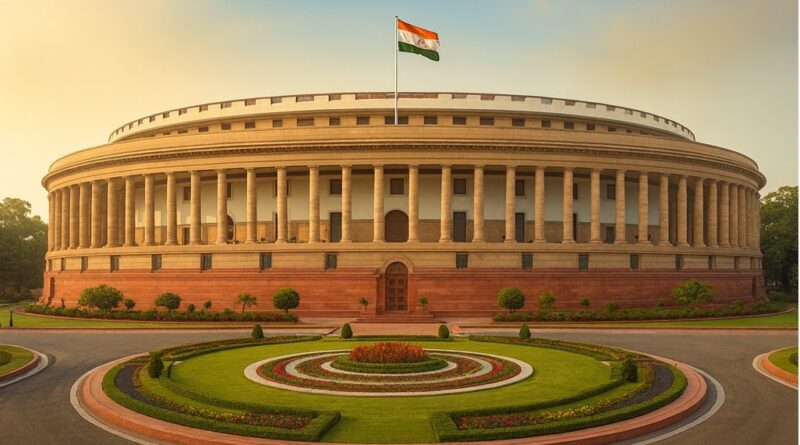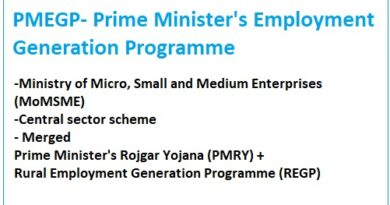Parliamentary System in India
Contents
Parliamentary System in India
This system, also known as the Westminster model, represents one of the fundamental features of Indian democracy and continues to evolve through constitutional practice and judicial interpretation.
Understanding Parliamentary Government
Modern democratic governments are classified into parliamentary and presidential systems based on the relationship between the executive and legislative organs. In a parliamentary system, the executive is responsible to the legislature for its policies and acts, while in a presidential system, the executive operates independently of the legislature with a constitutionally fixed tenure.
The parliamentary government is variously described as cabinet government, responsible government, or the Westminster model, prevalent in Britain, Japan, Canada, and India. The presidential system, found in the USA, Brazil, Russia, and Sri Lanka, is characterized as a non-responsible or fixed executive system.
Ivor Jennings aptly called it the ‘cabinet system’ because the cabinet forms the nucleus of power. The term ‘responsible government’ reflects the cabinet’s accountability to Parliament, while ‘Westminster model’ refers to its British origins. Interestingly, the evolving role of the Prime Minister has led scholars like Crossman and Mackintosh to describe it as ‘prime ministerial government’—a characterization equally applicable to India.
Core Features of India’s Parliamentary System
1. Nominal and Real Executives
India maintains a distinction between the ceremonial head of state and the actual head of government. The President serves as the nominal executive (de jure or titular executive), while the Prime Minister is the real executive (de facto executive). Article 74 mandates a council of ministers headed by the Prime Minister to aid and advise the President, and this advice is constitutionally binding.
2. Majority Party Rule
The political party securing majority seats in the Lok Sabha forms the government. The President appoints the leader of this party as Prime Minister, who then recommends other ministers for appointment. In the absence of a clear majority, coalition governments may be formed. Following the 2024 general elections, India returned to coalition politics as the BJP won 240 seats—short of the 272 required for a simple majority—necessitating reliance on National Democratic Alliance (NDA) partners.
3. Collective Responsibility
This represents the bedrock principle of parliamentary government. Ministers are collectively responsible to Parliament, particularly the Lok Sabha (Article 75). They function as a team and face removal through a vote of no confidence. This principle ensures unified government action and shared accountability.
4. Political Homogeneity
Ministers typically belong to the same political party and share common political ideology. In coalition governments, ministers are bound by consensus among partner parties.
5. Double Membership
Ministers must be members of Parliament. The Constitution requires that a minister who remains outside Parliament for six consecutive months must resign, ensuring legislative accountability.
6. Leadership of the Prime Minister
The Prime Minister occupies a pivotal position as leader of the council of ministers, Parliament, and the ruling party. This leadership role has grown increasingly dominant, transforming the system into what some describe as ‘prime ministerial government’.
7. Dissolution of the Lower House
The President can dissolve the Lok Sabha on the Prime Minister’s recommendation before its five-year term expires, enabling fresh elections. This power underscores executive influence over the legislature.
8. Secrecy
Ministers operate under the principle of secrecy, taking an oath administered by the President before assuming office. They cannot divulge information about proceedings, policies, and decisions.
Contrasting Presidential System Features
The American presidential system differs fundamentally:
The President serves as both head of state and head of government
The President is elected for a fixed four-year term by an electoral college
The President governs with a cabinet of appointed departmental secretaries accountable only to the President
No responsibility to Congress; cabinet members neither attend sessions nor hold congressional membership
The President cannot dissolve the House of Representatives
Based on the doctrine of separation of powers with independent legislative, executive, and judicial branches
Merits of the Parliamentary System
1. Harmony Between Legislature and Executive
The parliamentary system ensures cooperative relations between the legislative and executive organs, minimizing disputes and conflicts since the executive forms part of the legislature.
2. Responsible Government
Ministers remain accountable to Parliament through various mechanisms including question hour, discussions, adjournment motions, and no-confidence motions, ensuring responsive governance.
3. Prevents Despotism
Executive authority vests in a group (council of ministers) rather than an individual, dispersing power and checking dictatorial tendencies. Parliamentary accountability further constrains executive excess.
4. Ready Alternative Government
If the ruling party loses its majority, the opposition can form an alternative government without fresh elections, ensuring continuity and stability. As Dr. Jennings observed, “the leader of the opposition is the alternative prime minister.”
5. Wide Representation
The collective nature of the executive enables representation of diverse sections, regions, and communities in government, promoting national integration in India’s heterogeneous society.
Demerits of the Parliamentary System
1. Unstable Government
Governments lack tenure guarantees and depend on legislative majority support. No-confidence motions, political defections, or coalition breakdowns can destabilize governments. India witnessed several short-lived governments under Morarji Desai, Charan Singh, V.P. Singh, Chandra Shekhar, Deva Gowda, and I.K. Gujral.
2. No Continuity of Policies
Government instability hampers long-term policy formulation and implementation. Changes in ruling parties often result in policy reversals, as seen when the Janata Government (1977) reversed Congress policies, which were again reversed when Congress returned in 1980.
3. Dictatorship of the Cabinet
When the ruling party enjoys absolute majority, the cabinet can become autocratic, exercising nearly unlimited powers. H.J. Laski warned that the parliamentary system provides opportunities for executive tyranny, while Ramsay Muir complained of “dictatorship of the cabinet”—phenomena witnessed during the Indira Gandhi and Rajiv Gandhi eras.
4. Against Separation of Powers
The fusion of legislative and executive powers contradicts the theory of separation of powers. As Bagehot noted, “the cabinet is a hyphen that joins, the buckle that binds the executive and legislative departments together.”
5. Government by Amateurs
Ministers may lack expertise in their portfolios since selection is restricted to Parliament members. Additionally, ministers devote considerable time to parliamentary work, cabinet meetings, and party activities, potentially compromising administrative efficiency.
Why India Adopted the Parliamentary System
The Constituent Assembly debated the merits of the presidential system but ultimately chose the parliamentary model for several reasons:
1. Familiarity with the System
The parliamentary system had operated in India during British rule for three to four decades. K.M. Munshi argued: “For the last thirty or forty years, some kind of responsibility has been introduced in the governance of this country. Our constitutional traditions have become Parliamentary. After this experience, why should we go back and buy a novel experience?”
2. Preference for More Responsibility
Dr. B.R. Ambedkar explained that while democratic executives must balance stability and responsibility, no system ensures both equally. “The American system gives more stability but less responsibility. The British system, on the other hand, gives more responsibility but less stability. The Draft Constitution in recommending the parliamentary system of Executive has preferred more responsibility to more stability.”
3. Need to Avoid Legislative-Executive Conflicts
The framers sought to prevent the conflicts inherent in presidential systems. They believed infant democracies could not afford perpetual feuds between government organs and needed a system conducive to comprehensive national development.
4. Nature of Indian Society
India’s heterogeneity and plural society required a system offering scope for representing various sections, interests, and regions in government, promoting national unity. The Swaran Singh Committee (1975) reviewed this choice and concluded that the parliamentary system had performed well, requiring no replacement.
Distinctions from the British Model
While based on the British system, India’s parliamentary government differs significantly:
1. Republic vs. Monarchy
India has an elected President as head of state, while Britain retains a hereditary monarch.
2. Parliamentary Sovereignty
Britain’s Parliament is sovereign, while India’s Parliament operates under constitutional constraints including federalism, judicial review, and fundamental rights.
3. Prime Minister’s House Membership
The British Prime Minister must be a member of the House of Commons, while India’s Prime Minister may belong to either house of Parliament.
4. Ministerial Eligibility
Britain typically appoints only Parliament members as ministers, while India permits non-members to serve as ministers for up to six months.
5. Legal Responsibility
Britain maintains a system of ministerial legal responsibility requiring ministers to countersign the Head of State’s official acts—a practice absent in India.
6. Shadow Cabinet
Britain’s unique institution of a shadow cabinet, formed by the opposition to balance the ruling cabinet, has no equivalent in India.
Recent Developments and Updates (2024-2025)
Parliamentary Reform Initiatives
The Parliament’s Monsoon Session 2025 (July 21 – August 21) witnessed significant legislative activity with 15 Acts passed and enhanced digital modernization efforts. Landmark proposals included the Constitution (130th Amendment) Bill, which introduced automatic removal provisions for Prime Ministers, Union Ministers, Chief Ministers, and State Ministers if arrested and detained for 30 consecutive days for offenses punishable with five years or more imprisonment.
Strengthening Parliamentary Oversight
Recent emphasis on enhancing Parliament’s oversight function includes proposals to create a Parliamentary Research Service-style institutional unit under PRIDE (Parliamentary Research and Training Institute for Democracies), establish a Parliamentary Fellows Programme, and launch public dashboards tracking committee recommendations and government compliance.
Judicial Interventions on Parliamentary Matters
Anti-Defection Law Review: In Padi Kaushik Reddy v. The State of Telangana (2025), the Supreme Court criticized the Telangana Assembly Speaker for delayed decisions on disqualification petitions and set a three-month deadline for resolution. The Court urged Parliament to review the Speaker’s role in defection cases, noting that delays undermine the Tenth Schedule’s intent and the trust placed in presiding officers.
Governor’s Powers: The Supreme Court in April 2025 established clear timelines for Governors and the President to decide on bills, holding that Governors cannot withhold assent indefinitely or exercise absolute veto. Using Article 142 powers, the Court deemed pending bills as having received assent, subject to judicial review for non-compliance.
Federal Balance: In landmark 2024 judgments (Mineral Area Development Authority and Lalta Prasad Vaish), the Supreme Court reinforced federalism by holding that Parliament’s legislative powers cannot usurp states’ constitutionally vested powers, emphasizing the importance of maintaining clear division of legislative powers between Union and states.
Arbitration Law Amendments: The Supreme Court by 4:1 majority held that courts possess limited power under Sections 34 and 37 of the Arbitration and Conciliation Act 1996 to modify arbitral awards, balancing judicial review with arbitration efficiency.
Comparative Table: Parliamentary vs. Presidential Systems
| Aspect | Parliamentary System | Presidential System |
|---|---|---|
| Executive | Dual executive (nominal President, real Prime Minister) | Single executive (President) |
| Party Rule | Majority party rule | President and legislators elected separately for fixed terms |
| Responsibility | Collective responsibility to legislature | Non-responsibility to legislature |
| Political Homogeneity | Ministers share political ideology | Political homogeneity may not exist |
| Membership | Double membership (legislature and executive) | Single membership (no overlap) |
| Leadership | Prime Minister leads government and legislature | President dominates |
| Lower House Dissolution | Prime Minister can advise dissolution | No dissolution power |
| Powers Distribution | Fusion of powers | Separation of powers |
| Merits | Harmony, responsibility, prevents despotism, wide representation | Stability, policy continuity, expert governance |
| Demerits | Instability, policy discontinuity, against separation of powers, amateur government | Conflict potential, non-responsibility, narrow representation, autocracy risk |
Discover more from Simplified UPSC
Subscribe to get the latest posts sent to your email.






